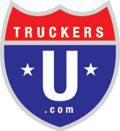It doesn’t take a majority to make a rebellion; it takes only a few determined leaders and a sound cause. – H. L. Mencken
I’m not suggesting taking up arms to bring forward changes in the trucking industry. What I am recommending is taking a revolutionary approach to how you conduct your trucking business.
As an Owner/Operator or small trucking company owner, you are required to wear many different hats in order to conduct your business: from driver, to safety director, to dispatcher, chief financial officer, CEO, to the person who drives the truck. To keep your business rolling, you have to do it all. To improve your operation and increase its profits requires revolutionary changes in how you wear each hat. Here are some questions you need to answer, in order to begin your ‘Revolution.’
- What are all of your costs of doing business? Not knowing your costs is like preparing to go to battle without having any ammunition. You need to separate your costs into three areas: Fixed Costs—Costs that occur day in, day out; week after week, that don’t require the truck to roll; Operational Costs—Any consistent cost which occurs once the truck is rolling; and Load-Specific Costs—Costs that occur either on a specific load or have extreme fluctuations from load to load.
- What’s your break-even point for each revenue-producing piece of equipment you have? Without this information, you’re going to war without any idea of the assets required for success. Your break-even point is the information that tells you exactly where costs are covered and creating a profit begins. The difficult part of understanding what your break-even point is, and how it affects your hauling rates, is that it changes every time your costs change. You need to know what your fuel is going to cost based on the price per gallon on the day of loading, how many miles from your previous destination to the destination of this load, and how much time is required to complete the load.
- Who are your customers, and what do they need and want?—Consider your customers your allies. First establish who your customers are: Shippers you work with directly? Brokers or other third parties from whom you receive tonnage? Or a trucking company who assigns your loads to you?
- Who’s your competition? To know your enemy is the first intelligence required to move toward success. Next is knowing the services and the quality they’re providing your customers and potential customers. It’s not a question of how well you beat your competition in hauling rates. It’s the value you beat them with, by the quality of your services.
- Who’s driving your trucks? Know the troops under your command. Be sure you understand each of their strengths and weaknesses. Know their wants and needs, and above all, don’t ask them to do something you wouldn’t do yourself for the same rate you’re paying them.
When you’ve established the answers to these five questions, the time has come for all good truckers to come to the service of their company. This is accomplished through putting together a Revolutionary Plan, by creating a strategic plan. You will be setting goals to reach each quarter and establishing targets to shoot for on a daily, weekly and monthly basis. Here are some samples of goals:
- Take your break-even point and develop a profitable hauling rate schedule towards which to aim. It may take some time to attain the highest rate you need to be receiving, but by establishing a target you can see, it becomes a lot easier to hit.
- Look at your current list of customers; determine new ways to meet both their wants and needs. Establish a customer service policy that’ll help you to exceed your customers’ expectations. Create a customer service follow-up program to be sure you’re meeting your improved service standards, and hitting that bull’s eye.
- Put together a plan to develop new customers, particularly direct shipping customers. Select geographic areas that your trucks currently frequent as targets. Set a goal to have outbound loads to haul in both directions by developing shipping customers where you are currently delivering.
- Look at your current team of drivers (even if the team consists of one—you) and determine what your drivers need and want. Next, develop programs to meet these requirements and wishes. Keep in mind that how you treat your drivers and how you take care of their needs and wants affects how well your customer service goals are met. The higher the quality of service your customers receive, the greater your trucking company’s value becomes. The higher your value to your customers, the easier it is to increase rates when necessary. Remember, it all begins with your soldiers in the trenches and how their needs and wants are met.
To some people, these ideas and suggestions don’t seem revolutionary. They’re most likely successful truckers already. But to those of you who find this new and different, it’s time to move away from the trucking standard of If everyone else is doing it this way, it must be correct. Remember, revolutions are caused by a desire for change, and we Americans are the result of a revolution for change. If your trucking business isn’t what you envisioned it would be, maybe it’s time for you to make your own personal revolution—VIVA la (your trucking company’s name)!
Timothy Brady ©2020

